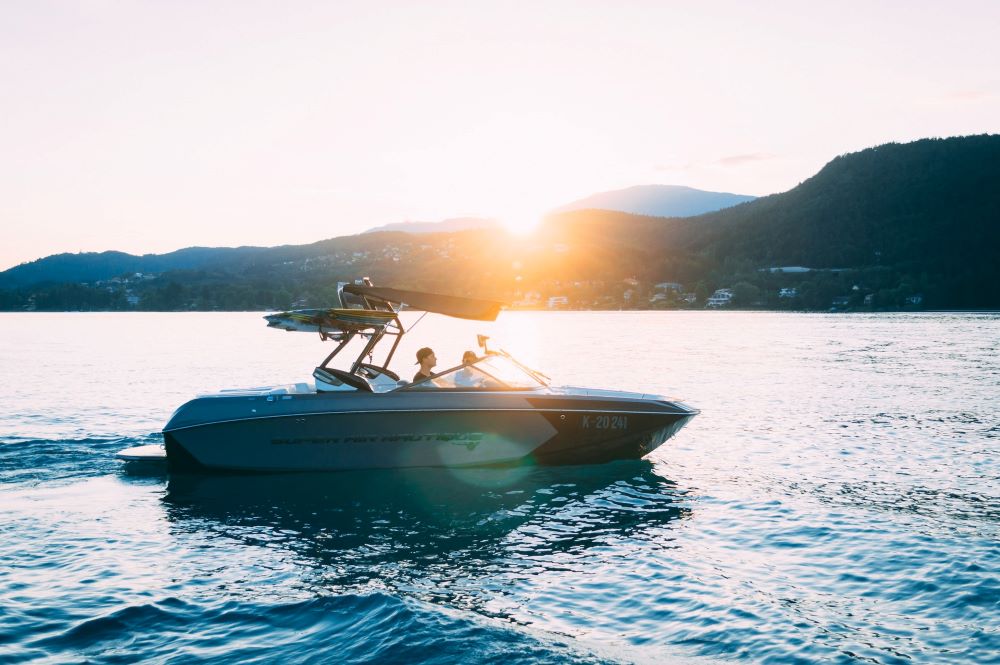
Boat Safely with Reboarding Devices
A reboarding device is a necessary safety feature for boats, regardless of if you plan to swim out on the water.
For the navigation of Canadian waters, the boating safety experts at the National Boating Safety School explain the importance of boat reboarding devices.
What is a reboarding device?
A reboarding device is a safety device. It is located at the stern of marine craft such as pleasure craft. It can be a platform, a ladder or even a rope. Whether or not a reboarding device is needed depends on the size of the boat being used. All boats with a freeboard exceeding 0.5 meters are required to install a reboarding device.
Why use a reboarding device?
The reboarding device can be used in a variety of ways. While it can help swimmers and divers get down into the water more easily, the main purpose of this device is to help all people get back into the boat.
If your boat has a reboarding device, it must be fully accessible to all passengers. The reboarding device is lifesaving in emergencies.
Types of reboarding devices
There are different types of reboarding devices. Different reboarding devices are suited for different types of boats.
Ropes
More simplistic in terms of safety, a rope (or buoyant heaving line) can be considered as a reboarding device. These are the requirements:
- The rope must float
- The rope must be long enough to reach into the water
- The rope must be tied into a nautical knot to the boat
These ropes often have tied nautical knots down the length of the rope for easier accessibility when ascending or descending into the water from the boat.
Ladders
There are two types of ladders:
- Skewed ladders
- Swim platform ladders
Skewed ladders are folding ladders that are located at the back of the boat. When navigating, they are folded up so as not to disturb the engine propellers. However, when on the water, they can be unfolded for a swim or to be used to get back on the boat. It is important that they go down deep enough into the water to facilitate the ascent and descent of passengers.
Swim platform ladders are ladders that are built directly onto the boat’s platform at the back. Also collapsible, they are put in the water when swimming and make it easier to get into the boat when going up.
Lifting harnesses
Lifting harnesses are reboarding devices that are intended for sailboats or boats longer than 24 meters in length. The lifting harness has two components: a pulley type mechanism and a harness. The harness is often integrated into a life jacket.
The principle is simple: a lanyard equipped with a carabiner connects the harness of the life jacket to the boat. If a person falls in the water, they can easily attach their lanyard to the carabiner when thrown towards them. The lift recoils the line, and the person can easily reboard the boat safely.
What are the reboarding device rules in Canada?
In Canada, marine vessels and recreational boats are subject to strict regulations especially when it comes to safety.
Boat owners are required by law to install and maintain all safety measures on their boat. If the boat’s freeboard (the vertical height to climb back onto the boat from the water) is greater than 0.5m, then a reboarding device is required.
The choice of reboarding device should reflect the length of the boat, the boat’s type and purpose. The main aim is to allow anyone who has gone in the water to get back out without difficulty. It is as much a safety device as a comfort during sea trips.
If you wish to go boating in Canada, it is important to respect the boating laws and regulations, and have the necessary safety equipment for navigation. Having equipment like a magnetic boat compass or a radar reflector on board are encouraged.
Sail Safely with National Boating Safety School
Boat reboarding devices are there for safety as much as for comfort. Whether you are alone on board or in a group, having the right reboarding device can save lives and add comfort to your fun. The National Boating Safety School offers a Transport Canada-approved boater safety course to prepare for your boating license exam.
If you want to take the plunge and get your Canadian boating license take our Transport Canada approved boater exam online today.

